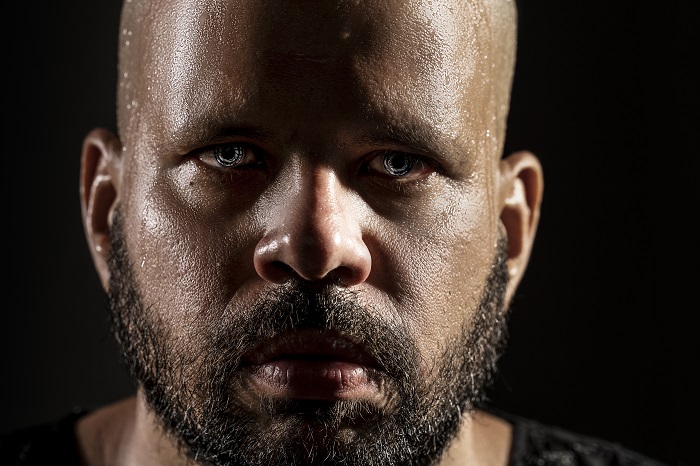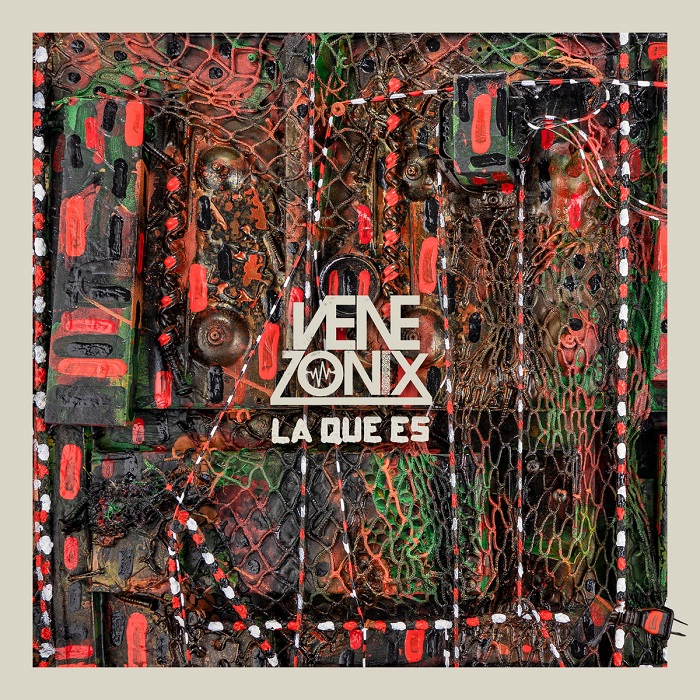A Venezuelan living in Miami, Venezonix champions Afro-Venezuelan music in promising debut EP. Meet the artist.
There is no denying that Afro-Latin music represents a wellspring of influence for electronic producers looking to reconnect to their roots. Hailing from Caracas and a resident of Miami for the last 20 years, Venezonix joins this movement via his impressive fusion of futuristic beats and traditional instruments, establishing himself as one to watch on the scene. A founding member of the group Elastic Bond, Andres Ponce puts aside his psychedelic soul for a moment in order to explore music influenced by Afro-Venezuelan sound via everything he could get his hands on.. A direct consequence of this passion, the percussionist has delivered La Que Es, a 7-track EP that reflects the richness of his African and indigenous heritage, giving both depth as well as a place on the dancefloor. PAM speaks with the inspired producer.
What is your musical background and where do your afro-venezuelan influences come in?
Afro-influenced, venezuelan folklore music came to my life indirectly at first, through records my parents played at home in Caracas. I also participated as a kid in school shows where we recreated traditional afro-influenced venezuelan dances like Los Chimichimitos or El Pájaro Guarandol. The high-school I graduated from focused on classical music education, but they also happen to have a random after-school course on traditional venezuelan percussion, which I took for two years. Then, during my teenage years, I played drums in rock bands, and later studied sound engineering. After moving to Miami, one of my very first gigs as a musician happened to be with a group of excellent venezuelan percussionists from the Aragua state that played tambores. We kept in touch throughout the years as I developed Elastic Bond and played gigs with other bands.
When did you decide to start this side-project?
At some point, years ago, I started missing the cadence of the venezuelan rhythms and went down an Internet rabbit hole listening to any available afro venezuelan recording I could find, started collecting vinyl and files, and began experimenting with my home studio gear, and inviting my percussionist friends over to record cumaco drums and other percussion elements.
More and more electronic producers are bringing afro-Colombian, afro-Peruvian and afro-Venezuelan sounds to the fore. Why do you think afro-Latin music has so much to offer to the electronic scene?
I think there’s a collective desire, a movement in Latin America to reclaim and learn more about our indigenous and african cultural heritage in music and other art forms. This is very inspiring to me. There is a richness, authenticity, and originality in afro-latin music that has a lot to offer to music lovers, especially in the electronic scene. There is a tribal, hypnotic energy naturally associated with afro rhythms that blends really well with electronic textures and dance culture. From a musical standpoint afro-latin producers bring more syncopation to the beats and use traditional latin folk sounds in new and clever ways. This has enriched the electronic scene, and the overall musical landscape.

You have been living in Miami for 20 years. What kind of influences have you absorbed there, and how do you blend them with your cultural heritage?
Indeed, we moved here in 2001. Miami is a melting pot of people from a variety of countries and that has influenced me a lot personally and musically. As a musician, I have had the chance to play with different types of bands playing cumbia, reggae, Haitian music, and other styles of music. With Elastic Bond, we have explored many different musical avenues and collaborated with great musicians from all over the world; for example we incorporated balafon in our last album Honey Bun (in the track “Cimarron”). The Caribbean and Latin influence is super strong here in Miami as well. At the same time there’s a strong electronic music scene, both mainstream with the Ultra Festival, large clubs, etc; but also a much more underground and interesting one spearheaded by smaller labels and artists. There’s a really cool local soul and hip-hop scene as well. Having lived here for all these years has broadened my horizon as a person and artist tremendously. That multicultural and open-minded spirit that Miami has shapes my world-view, and has helped me create the Venezonix music with less restrictions.
How do you find the right balance between electronic and traditional instruments?
It depends, I just go with the flow and what sounds and feels right using an open-minded approach. For me it is really important to honor the afro venezuelan rhythms and let them dictate what the rest of electronic elements and arrangements do, as opposed to forcing them into more straight, grid-based, electronic production formulas. My goal was that the original rhythmic cadences are felt even if only electronic elements are used at certain points. I do love recording traditional drums, vocals and more organic elements too, and plan to incorporate even more of these in future Venezonix records.
What is the story behind the video for “La Que Es”?
The clip was conceived and directed by my friend Joy Castañeda, supported by a very talented team of Venezuelan immigrants here in town. I contributed some ideas to bring visual technology elements like the beat machine and my bionic robot eyes to contrast against the organic cumaco drum and the girl, similar to how it happens in Venezonix’s music. There is a bit of an afro futurism influence. The video uses symbolism such as the girl being stuck, unable to move, to represent the need to go back to being more present and less obsessed with technology. Slowly she breaks free, and movement and color come to her life, inspired by the music. The paint represents freedom and self-expression based on Joy’s original vision. The song features the amazing Betsayda Machado and Parranda el Clavo on vocals and drums, which we recorded in a studio session here in Miami. Curiously I had started producing the instrumental beat for the song inspired by Betsayda’s music so it was wonderful that they liked the idea of collaborating on the record.
The EP La Que Es is available now. Order it here.






